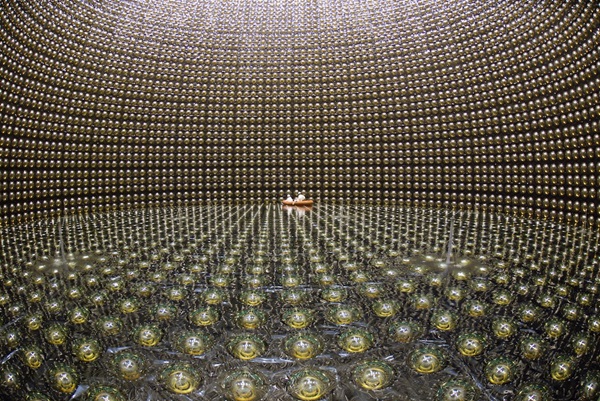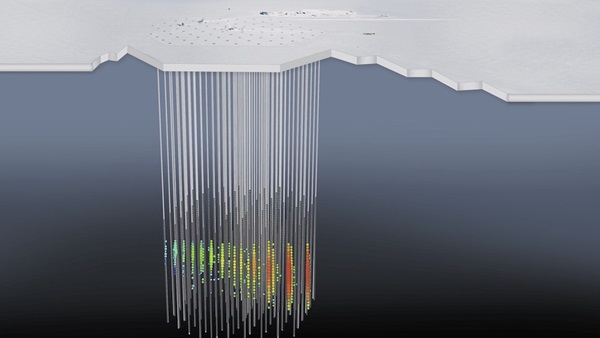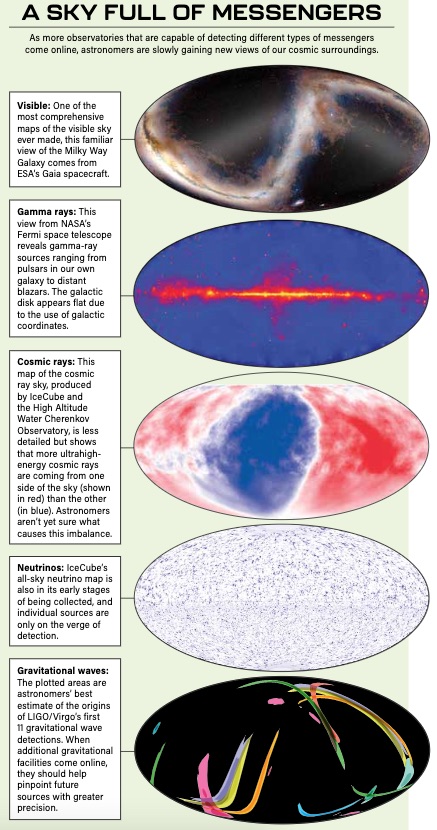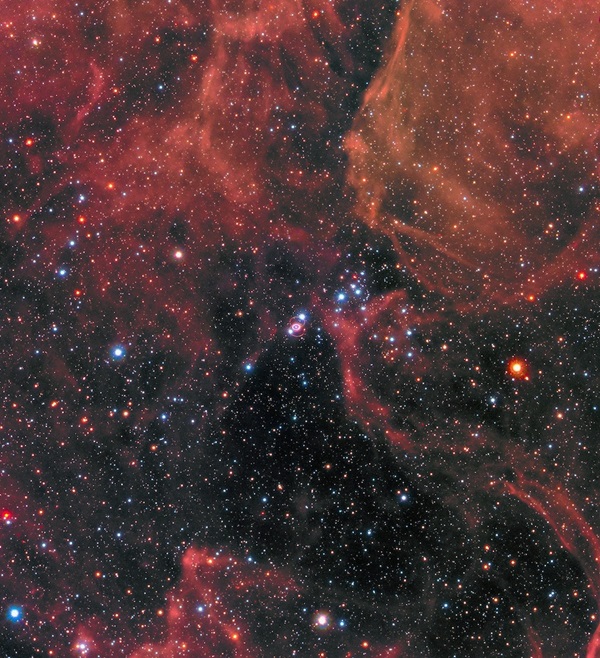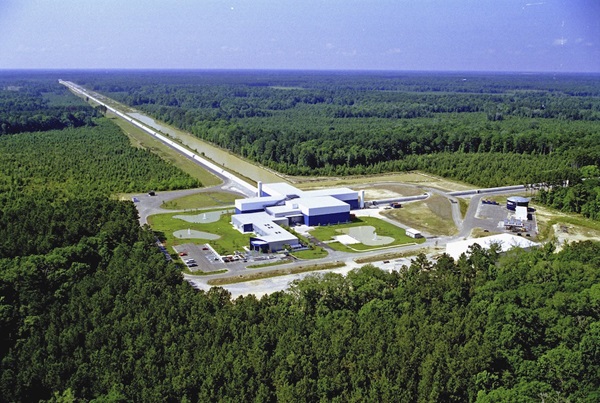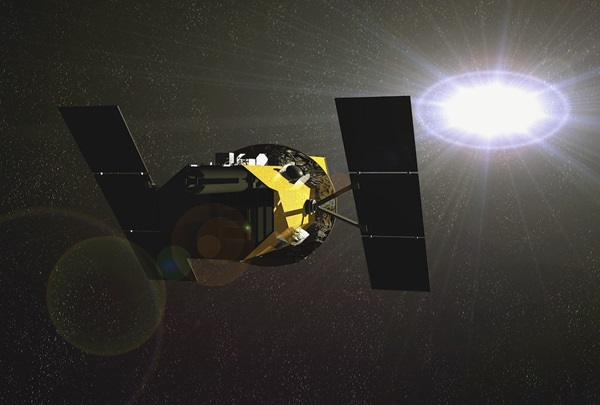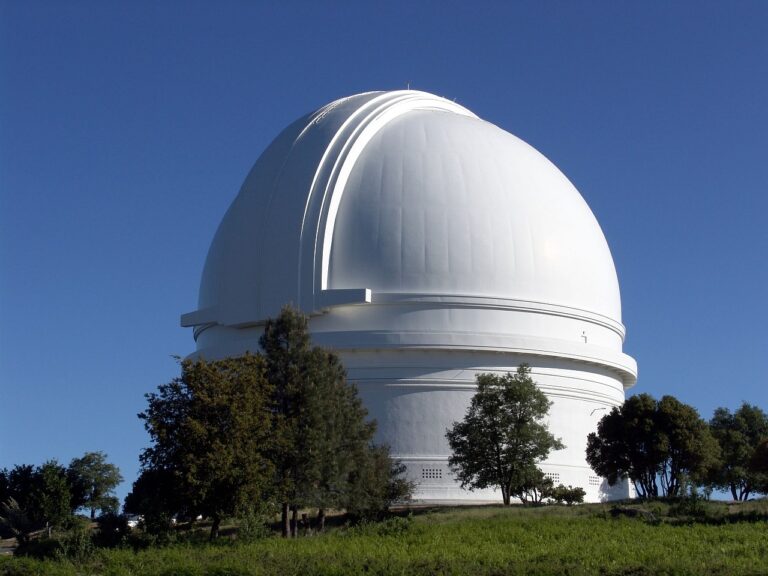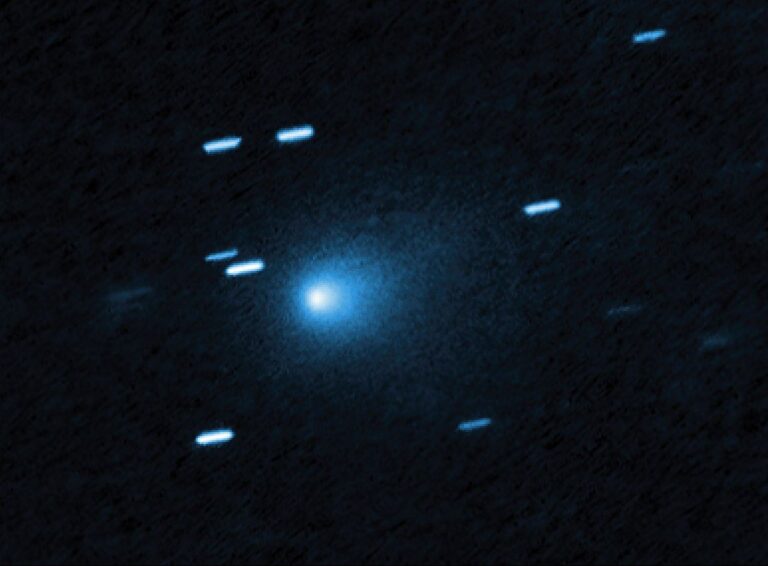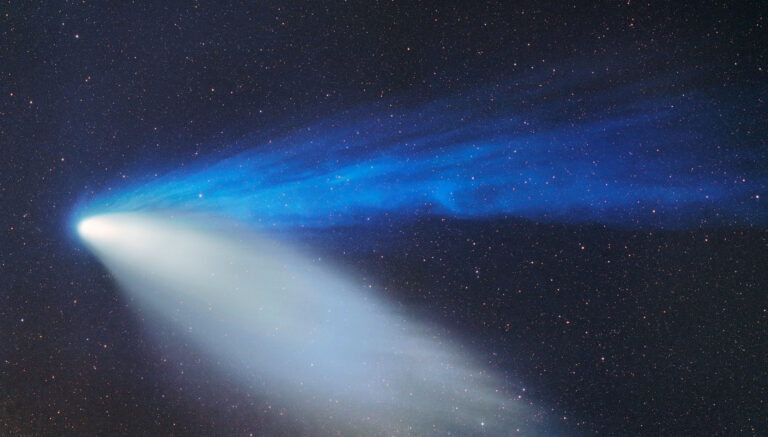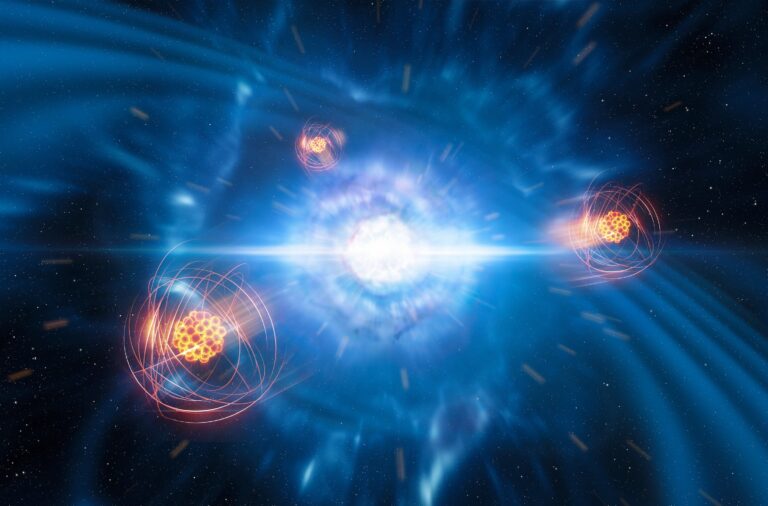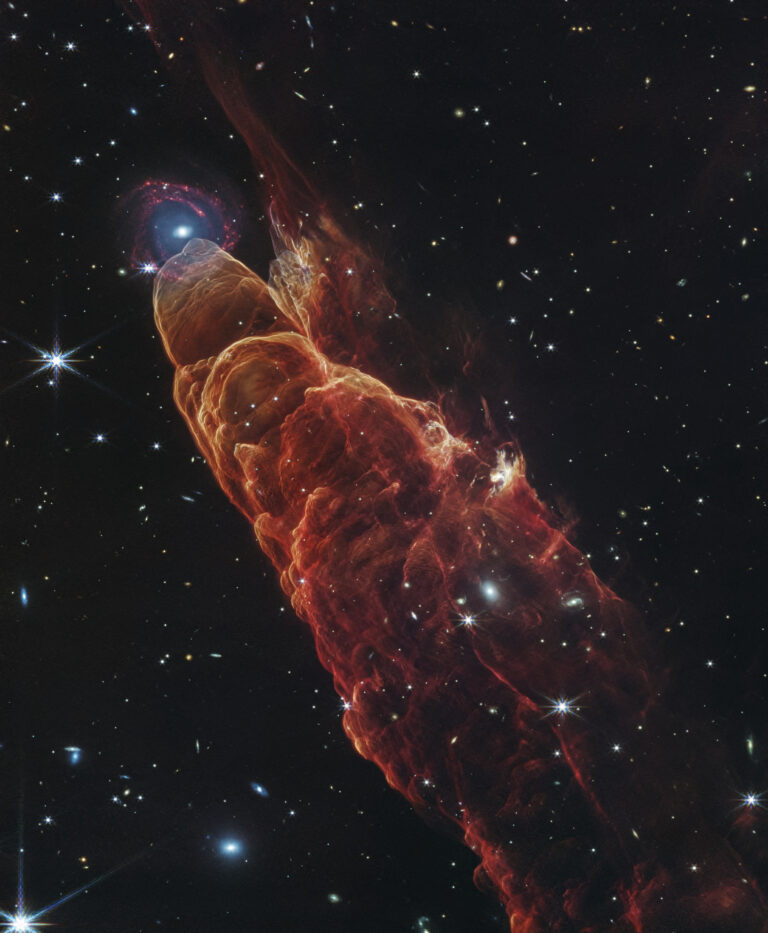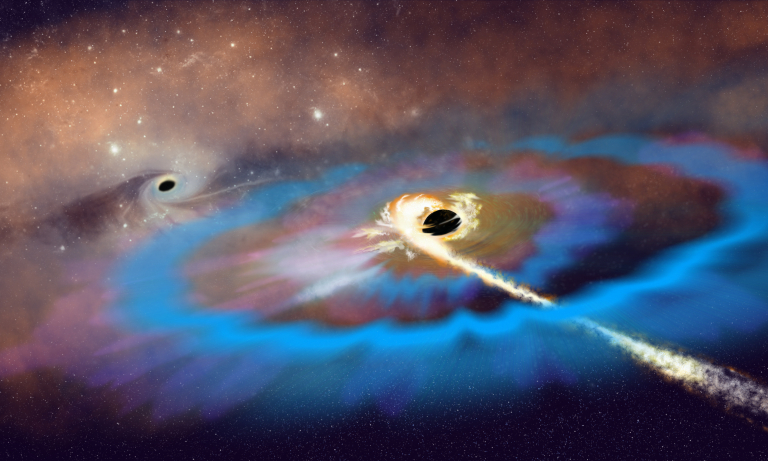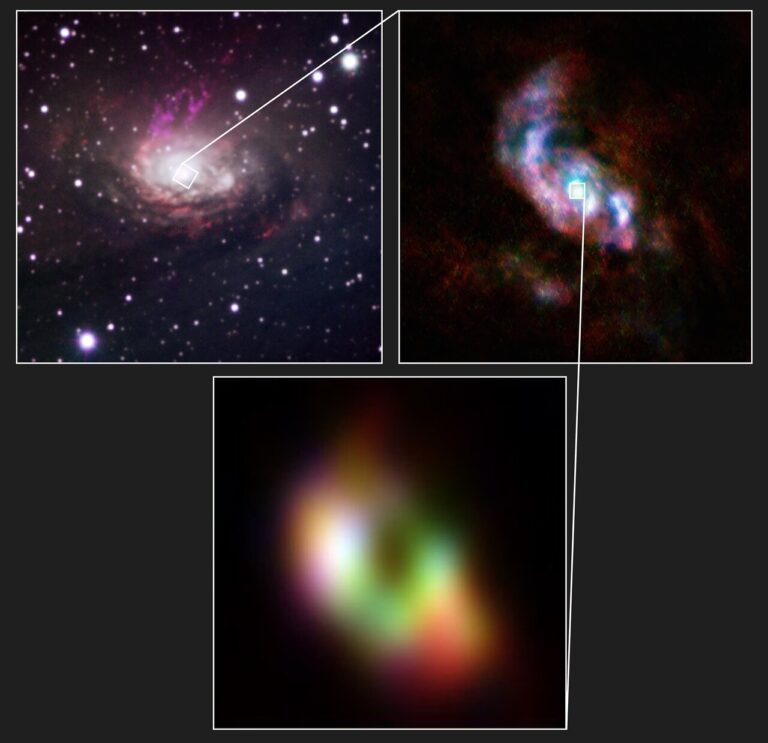Key Takeaways:
For centuries, astronomers studying the stars were limited to information from visible light. Telescopes, photographic plates, and digital detectors were all developed to collect, magnify, and capture that signal.
But visible light isn’t the only message the cosmos is sending us.
“All the big, interesting events — like supernovae, gamma-ray bursts, and mergers — are disruptive,” says Péter Mészáros, a theoretical astrophysicist at Penn State. “They send out accelerated particles, photons, and waves in space-time.”
Astronomers call these messengers, and there are four types: photons, neutrinos, cosmic rays, and gravitational waves. Gradually, scientists have unlocked the ability to detect them all. Today, astronomers stand on the brink of a new era of multi-messenger astronomy — one they have been awaiting for decades and that is already providing new insights. Thanks to big instruments, big collaborations, and big data, they finally have the practical tools to interpret the cosmic detritus constantly raining down upon the Earth.
A fuller picture
The roots of multi-messenger astronomy date to the 1960s, when the U.S. government launched satellites carrying detectors for gamma rays — the most powerful photons — to track Russian nuclear tests. They found plenty of gamma-ray sources, but to their surprise, they weren’t coming from Earth, but from all around the sky.
“People thought the Russians were making nuclear explosions out in space,” says Mészáros. “But soon it was obvious that they were coming from very far away, cosmological distances.” Around the same time, astronomers detected neutrinos, which are subatomic particles with no charge and very little mass, emerging from the Sun. Cosmic rays — atomic nuclei that have been accelerated to near the speed of light — were first seen in balloon experiments about 100 years ago. And although Albert Einstein predicted gravitational waves — the ripples in space-time that occur when massive objects collide — in 1916, they were not observed until 2015.
Multi-messenger astronomy is the practice of synthesizing these various messengers from violent astronomical events. For instance, astronomers have directly observed gravitational waves and used these observations to understand what happens when neutron stars or black holes collide. Astronomers have also uncovered new mysteries, including the discovery that rare ultrahigh-energy cosmic rays originate from outside our galaxy, and that high-energy neutrinos form a cosmic background that pervades the universe. Exciting theories abound as to what kinds of exotic objects are sending out these cosmic messengers: superstrings, dark matter, and even “defects” in the structure of the universe have all been suggested.
“The ultimate goal is to witness an event with all the messengers,” says Kate Scholberg, a neutrino physicist at Duke University. “We have come close in the past few years. When it does happen — and it should soon — then hopefully we can get a full picture of the emission source.”
The power of these combined messengers comes from the fact that each one is generated by one of the four forces of nature: photons by the electromagnetic force, gravitational waves by gravity, cosmic rays by the strong nuclear force, and neutrinos by the weak nuclear force. The different messengers are the product of their particular origins, and so their presence (or absence) and their characteristics — such as composition, energy level, and direction — teach us about the object they came from.
The trick is that each of the aforementioned messengers requires vastly different detectors and an unprecedented level of cooperation across disciplines. Instantaneous communication is needed to coordinate observations of fleeting events, and processing the data requires bespoke skills in statistical analysis and data mining. It has been said that the only limit to success is of imagination, but in this case, the challenges are purely practical.
Capturing neutrinos
The first object scientists studied with multiple messengers was one close to home: our Sun. In the 1960s, American physicist Raymond Davis Jr. led the first experiment to detect solar neutrinos: a 100,000-gallon (380,000 liters) tank of dry-cleaning fluid placed deep underground in the Homestake Gold Mine in South Dakota. When a neutrino happened to interact with a molecule of that fluid, it transformed into an atom of argon, which Davis could detect. The observations of solar neutrinos have since been confirmed by others, including the series of Kamiokande detectors using pure liquid water in Japan.
Then, in 1987, neutrino observatories detected emission from a supernova in the Large Magellanic Cloud — two hours before visible light from the stellar explosion reached Earth. That supernova, SN 1987A, was the first that modern astronomers were able to study with multiple messengers. These observations revolutionized our understanding of core-collapse supernovae, eventually providing direct evidence that these events create neutron stars.
Neutrinos are useful messengers because they travel in a straight, traceable line from their origin, passing through nearly every obstacle in their path. This allows scientists to see into locales that radiation cannot penetrate — but it also makes them difficult to detect.
“Neutrinos only weakly interact with matter,” says Julia Tjus, an astroparticle physicist at Ruhr-Universität Bochum in Germany. “So you need huge volumes to catch only a few particles, either in man-made water tanks or, on a much bigger scale, by instrumenting the ocean or the Antarctic ice sheet.”
This last option is what has been done with IceCube, a neutrino detector at the South Pole. Ice works better than liquid water — when water sloshes around, it makes it harder to trace neutrinos back to their point of origin in the sky — and Antarctic ice is especially transparent and stable. To detect neutrinos, IceCube also needed to be shielded from radiation at Earth’s surface. So scientists drilled with a specially designed hot-water tool into the ice sheet to a depth of about 8,200 feet (2,500 meters), and lowered optical modules on long cables into the holes before they refroze. These sensors detect neutrinos by imaging the secondary particles that radiate from points of impact in the ice.
“The most significant multi-messenger detection out of IceCube so far came from a blazar in 2017,” says Tjus. Blazars are a type of galaxy with a central supermassive black hole that shoots out jets of ionized matter at nearly the speed of light. In that event, IceCube’s sensors captured the telltale trail of particles from the impact of a single neutrino from a source in the constellation Orion. Follow-up observations from NASA’s Fermi Gamma-ray Space Telescope showed that in the same direction lies blazar TXS 0506+056, making it the third known individual source of neutrinos (after the Sun and SN 1987A). Furthermore, the gamma-ray observations showed that the blazar was flaring up at the time.
The detection of these two messengers — a high-energy neutrino and gamma rays — is strong evidence that blazars are a source of high-energy neutrinos. But it also suggests that blazars play a role in generating another mysterious messenger — cosmic rays, which are critical intermediaries in producing those neutrinos.
Cosmic debris
Cosmic rays are high-energy protons and atomic nuclei — the leftovers of matter that has been torn apart. These particles represent the only direct source of samples of material from outside the solar system. They move through space at nearly the speed of light, and their exact speed and character are determined by the events that accelerate them. When they strike other material, they interact with it, leaving clues in their wake. For instance, when colliding with interstellar dust, they may form bonds between atoms and create complex organic molecules, the building blocks of life. And, scientists suspect, when cosmic rays are ejected from the core of a blazar and interact with surrounding gas, they may generate neutrinos — like the one detected by IceCube in 2017.
That means the next generation of neutrino telescopes will also be useful for investigating cosmic rays. Upcoming facilities like IceCube-Gen2 (an upgrade to the existing array) and the Cubic Kilometre Neutrino Telescope (a planned neutrino detector to be installed at the bottom of the Mediterranean Sea) “should be sensitive enough to see the diffuse neutrino flux that high-energy cosmic rays make as they travel through deep space,” colliding with interstellar dust, Tjus says.
Astronomers can also use dedicated observatories to study those cosmic rays that survive the trip to Earth from galactic or even extragalactic events. When they hit Earth’s atmosphere, they interact with air molecules, creating showers of secondary particles: X-rays, muons, protons, antiprotons, alpha particles, pions, electrons, positrons, and neutrons. The largest facility designed to capture this subatomic shrapnel is the Pierre Auger Cosmic Ray Observatory, which uses more than 1,600 massive water tanks spread out over 1,160 square miles (3,000 square kilometers) in western Argentina.
Astronomers think that most cosmic rays originating within our galaxy are accelerated by shock waves produced by supernovae. But Pierre Auger has also seen very rare ultrahigh-energy cosmic rays. In 2017, Pierre Auger researchers reported these cosmic rays appear to originate outside our galaxy. While they suspect actively feeding supermassive black holes produce them, a true multi-messenger detection that includes cosmic rays is needed to verify that theory.
Trail Blazars
The voracious black holes at the centers of blazars are the most powerful particle accelerators in the cosmos, capable of producing multiple types of messengers, including gamma rays and neutrinos.
The process starts with the blazar’s jets of matter, which shoot out into space, forming a shock wave as they plow into surrounding material. The charged particles streaming away from the shock generate magnetic fields that scatter particles back and forth across the shock boundary, gaining energy from the shock every time. This can accelerate protons to nearly the speed of light, turning them into cosmic rays (p).
If these cosmic rays collide with photons, they may produce particles called pions. These can be neutral pions (π0), which decay to gamma rays as well as some electrons and positrons (both denoted by e).
Alternatively, the pions may have a charge (π±), in which case they decay to a muon (μ) and a muon neutrino (νμ) — one of three “flavors” of neutrinos. The muons decay further to an electron or positron (e) and either a muon neutrino or an electron neutrino (νe, another flavor of neutrino).
These messengers then carry on streaming through the universe — perhaps to be captured and counted by detectors at Earth.
Across the spectrum
Astronomers have been studying the cosmos with electromagnetic radiation ever since people first looked at stars with the naked eye. But beyond visible light, the electromagnetic spectrum includes all types of electromagnetic radiation: radio waves, microwaves, infrared and ultraviolet light, X-rays, and gamma rays. These last two are blocked by Earth’s atmosphere, so astronomers must rely on spacecraft like Fermi and NASA’s Neil Gehrels Swift Observatory.
Gamma rays are produced mainly by nuclear reactions: fusion, fission, and atomic decay. Gamma-ray bursts (GRBs) are born from the explosion of a massive star or the collision of neutron stars. In a matter of seconds, GRBs put out as much energy as the Sun puts out in billions of years. “Gamma rays are the most energetic kind of radiation, so this tells us that something massive has happened,” says Paul O’Brien of Leicester University, who has been part of the Swift team for nearly two decades.
Swift acts as an eye in the sky, constantly scanning the cosmos for GRBs. But GRBs are brief and easy to miss. To maximize the chances of spotting one, Swift teams up with gravitational-wave detectors. “If the gravitational wave guys tell us they saw something, we have to move quickly, to point in that direction and try to find it,” says O’Brien.
The observations complement each other: Gravitational waves are the fastest messenger, but current gravitational wave instruments aren’t able to accurately localize the exact source of events. On the other hand, X-rays and gamma rays are very useful in this regard.
“But Swift is getting on,” O’Brien says. The Space Variable Objects Monitor (SVOM), a joint project between China and France, is a small satellite in the vein of Swift but with new capabilities. It’s planned for a June 2022 launch. The European Space Agency (ESA) also has a large observatory planned for the 2030s: the Advanced Telescope for High-ENergy Astrophysics (ATHENA). These detectors are needed, says O’Brien, “because without space-based transient monitors, we don’t get the high-energy signal. And that’s a critical part of the whole message.”
On May 22, 2020, Northwestern University’s Wen-Fai Fong received a more mundane kind of message: an email straight from Swift, announcing a GRB. “When they see one, it triggers an automatic mail-out,” she says. “I got a notification on my phone, and quickly contacted the Very Large Array (VLA), then Hubble.”
Fong was able to collect some good data from the VLA, which helped her secure precious time on the Hubble Space Telescope. This added vital information to the GRB that Swift detected. Ultimately, she and her team were able to capture five messengers from the event: X-rays, optical light, infrared light, radio waves, and gamma rays.
Fong had found something special. Although the event was very bright, it clearly wasn’t a nova or supernova. It was a little too dim, and with faster ejecta. She concluded it was a kilonova: a burst created by a neutron star colliding with a black hole or — in this case — another neutron star.
Fong’s study is a significant contribution to the theory that a collision of two neutron stars forms a magnetar — a kind of super neutron star with a powerful magnetic field, which has recently been shown to produce high-energy X-rays and gamma rays. Roughly 30 magnetars have been discovered — all in our galaxy — and Fong’s multi-messenger work ties them together with kilonovae and GRBs.
The resulting kilonova also produces gravitational waves on a grander scale than supernovae. But, “sadly, the gravitational-wave facilities are currently offline, so they couldn’t corroborate,” says Fong. That’s because the Laser Interferometer Gravitational-wave Observatory (LIGO) in the U.S. and the Virgo detector in Italy are undergoing upgrades in preparation for their next observing run, set to start next year.
Catching waves
Einstein predicted gravitational waves, the most elusive of the messengers, in the early 20th century on the basis of his general theory of relativity. Unlike the messengers of the other three forces, they are not particles, but disturbances in the fabric of space-time that propagate outward at the speed of light and are created when matter is accelerated. The effects of these waves passing through Earth are so small and brief that the LIGO-Virgo detector arms, which range from 1.86 to 2.46 miles long (3 to 4 km), measure a distortion of only 1/10,000 the width of a proton over a fraction of a second. The first gravitational-wave detectors were built in the 1970s, but it took several decades to improve their sensitivity enough for functional observing.
Since that long-awaited 2015 detection, subsequent observations have been trickling in — a few the next year, more the next. Then, in just the first half of the third observing run (from April to October 2019), an incredible 39 gravitational-wave events were detected. This has been game-changing for the field — gone are the days when astronomers caught only one big multi-messenger event a decade. And as gravitational waves are the fastest of all the messengers, our chances of capturing an event are higher than ever.
To identify these events and sort them from the noise, the LIGO and Virgo teams use advanced signal processing and analysis methods, including machine learning. This illustrates an emerging new specialty in the field that combines skill sets from astronomy, statistics, and computer science. Even though these scientists have no amalgamated title as of yet, à la astrophysicist, their work is vital. The ability to quickly — and accurately — identify events in observational data so that alerts can be sent out to the rest of the astronomical community rests upon their software.
“Not all events produce all messengers,” says LIGO team member Lilli Sun of Australian National University. “For example, we will not expect to see [electromagnetic] radiation after a binary black hole merger.” She notes that one particularly remarkable detection in 2017, a neutron star merger, “had everything except neutrinos. We tried to see them but didn’t. We don’t know why exactly — it is possible that we were not facing the event exactly right. This remains a goal, because indeed we are expecting to see them.”
Working together
Multi-messenger detection capabilities are only set to grow more powerful. All the major facilities involved are either currently undergoing upgrades — like Pierre Auger — or have imminent plans to do so. IceCube-Gen2 is due to be deployed during the Antarctic summer of 2022–2023. The Japanese Kamioka Gravitational Wave Detector has recently begun operations and hopes to achieve its target sensitivity by 2024. In addition to the ongoing Advanced LIGO-Virgo upgrade, a new LIGO facility is currently being built in India. And ESA has plans to build a space-borne gravitational-wave observatory, the Laser Interferometer Space Antenna, scheduled for launch in the early 2030s. These new facilities, with their improvements in resolution and sensitivity, will allow for more and better detections, and hopefully even solve some long-standing mysteries.
“There are many things we hope to learn in the next few decades,” Sun says, “such as what is at the center of a neutron star, and the exact conditions which determine whether a merger creates a compact object or a black hole. We also hope to see different kinds of gravitational waves, perhaps ones from continuous sources. And it could be that gravitational waves can teach us about dark matter,” the mysterious stuff that makes up most of the matter in the universe and holds together galaxies with its gravitational glue.
Multi-messenger astronomy might even hold clues to resolving one of the most fundamental problems in all of science: the fact that the standard model of physics unifies only three of the four known forces (electromagnetic, strong, and weak). General relativity, which describes how gravity arises from the curvature of space-time, also explains the behavior and evolution of the cosmos, but from a different point of view. Yet these two theories become inconsistent with each other at the smallest level, such as the center of a black hole or the moment of the Big Bang. Can they both be right? Can they be unified into a “Theory of Everything?”
Perhaps multi-messenger astronomy has the answer. Perhaps by combining information from all four forces, we can penetrate to the tiniest, earliest core of astronomical-scale phenomena and take a quantum leap in our understanding of how the universe actually works.
Like the old parable that teaches us blind men cannot make sense of an elephant by touching just one part of its body, the big picture of massive astronomical objects and events can only be made clear when all possible sources of information are gathered and synthesized. Perhaps then, we will be able to approach the grand unification of the forces and finally make sense of it.



